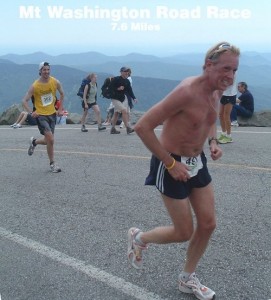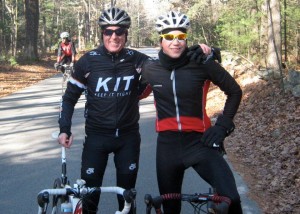By guest KIT blogger, Dave Andersen
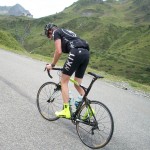
Most of us first learn to ride a bicycle as young kids. Riding a bike is so simple even toddlers can do it. Yet serious cycling and especially bike racing are anything but simple. Or are they? Many folks labor over bike fit, wheels, heart rate monitors, power meters, and training plans. Granted, some of this stuff has it’s place, but at the essence we are turning the pedals and just trying to keep up with our fellow riders.
Good Enough for The Cannibal
While some of my competitors are dropping thousands of dollars on power meters to go on their already expensive bikes I made the decision to train and race by feel and sensation. If it was good enough for Eddy Merckx (see below), it’s good enough for me. Training is or can be a complex mix of distance, intervals, group rides and periodization. Racing is all about pack skills and keeping up. Either you can keep up or you can’t. I don’t need a heart rate monitor or a power meter to tell me I’m suffering or getting dropped. And if I can’t keep up it’s because the other guys are stronger.
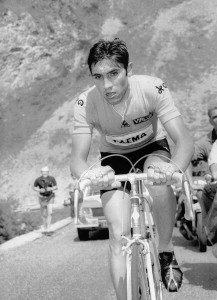
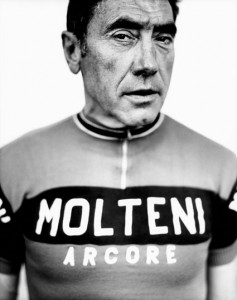
Hey, I’m not anti-technology! I like the internet and carbon fiber, and I like having folks with their map-equipped Garmin’s along when riding in some far flung locale. I have simple cyclometers mounted on some of my bikes, but I usually only look at the data after I’m done riding, to see how far I went. When I do intervals or hill repeats I use a stop watch. In a race I never look at the data, or if I did glance at my cyclometer it would be to see how much farther we have to go, but then again, what does it matter? The object of the race (Winning? Having fun?) is to keep up for as long as possible, preferably, right to the finish line.
Kudos to those that utilize these advanced technological tools successfully, but I’m going to keep my cycling simple; I’m going to look outward (where I’m going) and inward (monitoring my sensations).
If you don’t agree with me, I refer you to RULE #74:
“Rule #74: V Meters or small computers only.
Forgo the data and ride on feel; little compares to the pleasure of riding as hard as your mind will allow. If you are not a Pro or aspire to be one, then you don’t need a SRM or PowerTap. To paraphrase BSNYC, an amateur cyclist using a power meter is like hiring an accountant to tell you how poor you are. As for Garmins, how often do you get lost on a ride? They are bulky, ugly and superflous. Cycle computers should be simple, small and mounted on the stem. And preferably wireless.”
To the folks at SRM (if you happen to read this): you might change my mind about technology by setting me up with the SRM SRAM S975 Powermeter System
(retail: $3,845.00). Jussayin!
In the meantime, keep it tight (and simple).
——————-
*Dave Andersen lives in Boston and works in the educational publishing business. He shares his passion for cycling and sport with a wide range of friends and competitors.
